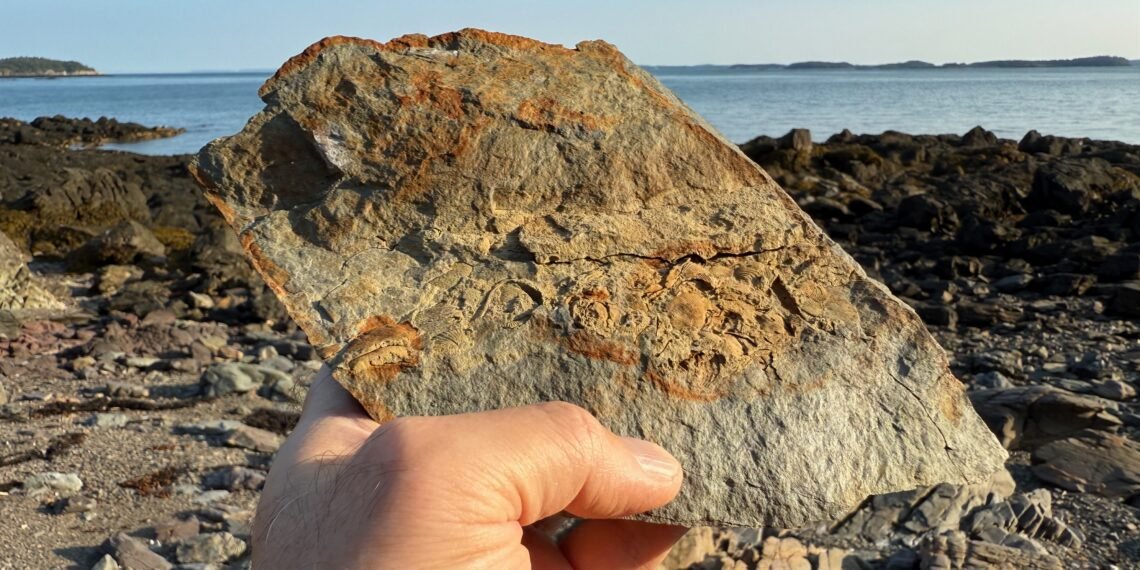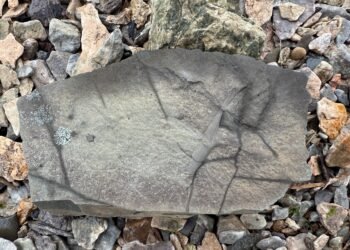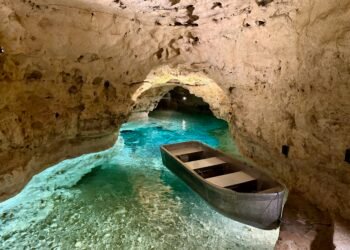Fossil hunting in Back Bay reveals Crow Island fossils – Silurian brachiopods preserved in New Brunswick’s coastal rocks. Join me as I retrace a fossil hunt first begun in my school days, exploring the island’s geology, its ancient seas, and the thrill of discovery along the Bay of Fundy.
1 Fossil Hunting Back Bay: A Childhood Rediscovery
When I was in junior high school, my geography teacher introduced us to the fascinating world of fossils. In passing, he mentioned that just down the coast from my hometown of St. George, New Brunswick, there was a small island called Crow Island where fossils could be found. The thought that ancient life forms might be preserved in rocks just a short drive away lit a spark in me.
Soon after, I set out on my very first adventure fossil hunting in Back Bay, eager to see the Crow Island fossils for myself.
I still remember the thrill of finding those fossils at low tide, staring at tiny shells embedded in stone – relics of a world unimaginably older than the Bay of Fundy fishing village of Back Bay nearby. It felt like discovering lost treasure.
Now, forty years later, I decided to return to Crow Island and see what fossils I could find again.
2 Quick Facts for Fossil Hunting in Back Bay at Crow Island
- Location: Crow Island, near Back Bay, Charlotte County, New Brunswick, Canada.
- Access: Reachable on foot at low tide via a sandbar from Back Bay Cemetery (about 1 km walk); inaccessible at high tide except by boat.
- Fossil Type: Mostly Silurian brachiopods (Camarotoechia, ~430–420 million years old).
- Best Time to Visit: 2 hours before low tide (4-hour exploration window); check the Bay of Fundy tide chart for St. Andrews.
- Difficulty: Moderate – slippery rocks, seaweed, and uneven footing; sturdy footwear recommended.
- Regulations: Fossil collecting requires a permit in New Brunswick; best to photograph and leave fossils in place.
- Nearby Highlights: Sardine weirs, fishing boats in Back Bay, and Greens Point Lighthouse for sunset views
3 The Adventure Begins: Getting to Crow Island
Crow Island is a small island near the mouth of Passamaquoddy Bay, connected to the mainland only at low tide by a sandbar. At high tide, the sandbar vanishes beneath the Fundy waters, making the island accessible only by boat. Timing, therefore, is critical: I planned my trip to arrive two hours before low tide, giving myself up to four hours of safe exploring time. To plan your own visit, you can check the Bay of Fundy tide chart for St. Andrews, which provides accurate low tide times for Crow Island.
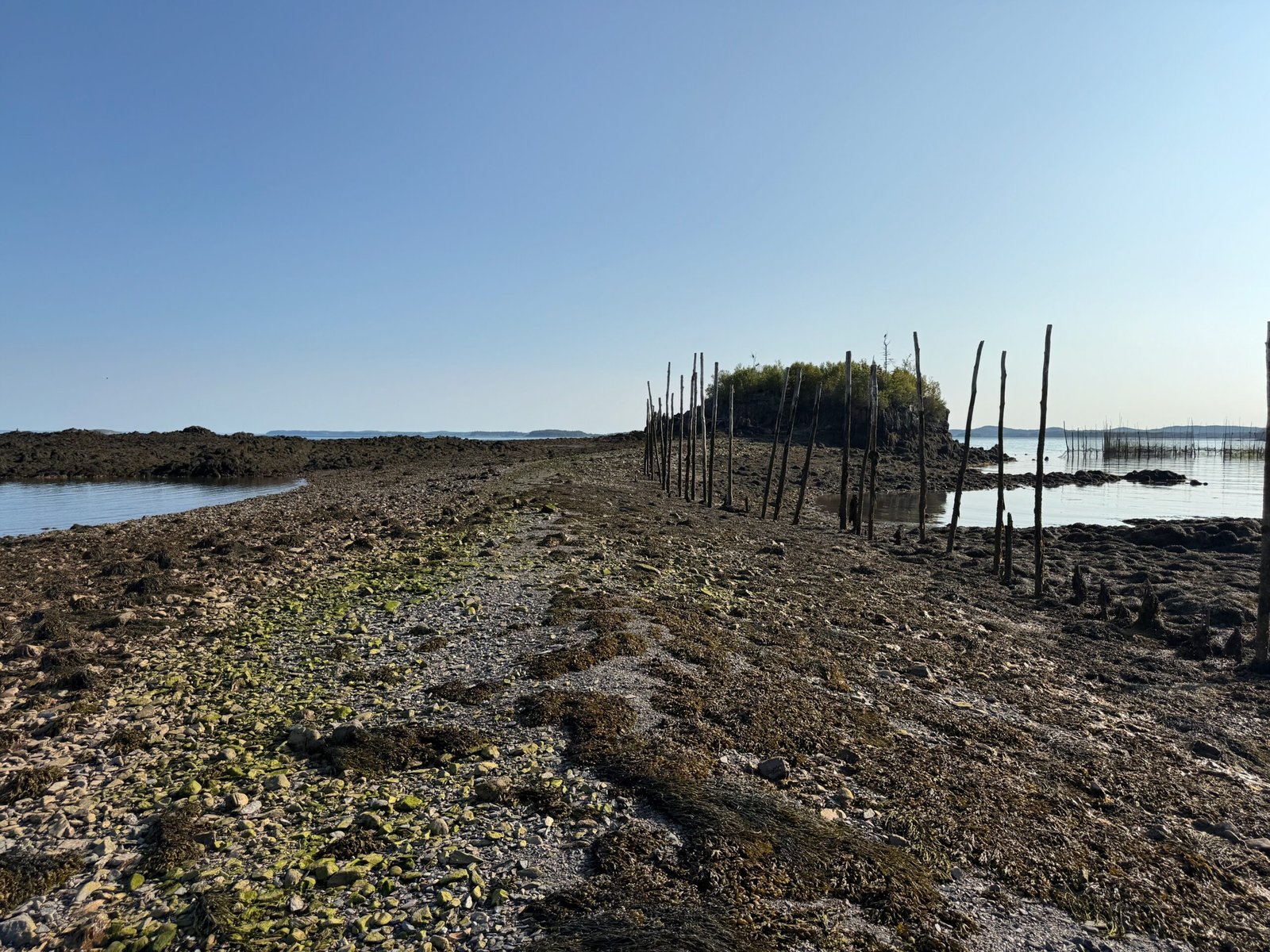
I parked at the Back Bay Cemetery, then scrambled over rockweed-covered outcrops to reach the beach and sandbar to Crow Island. From there, it’s about a one-kilometre walk to the island. The footing can be tricky, so proper footwear is a must. But the walk itself is beautiful, with sweeping Fundy views and seabirds wheeling overhead – the kind of coastal scenery that makes Charlotte County so special.
4 First Fossil Finds
Once on the island, I began scouring the bedrock. At first, I spotted only small shell impressions – faint reminders of ancient seas. But the geology here is incredibly diverse, with rocks from multiple Paleozoic eras. Crow Island lies near the Saint George and Mascarene Group formations, which were deposited hundreds of millions of years ago when southern New Brunswick was covered by warm, shallow seas near the equator.
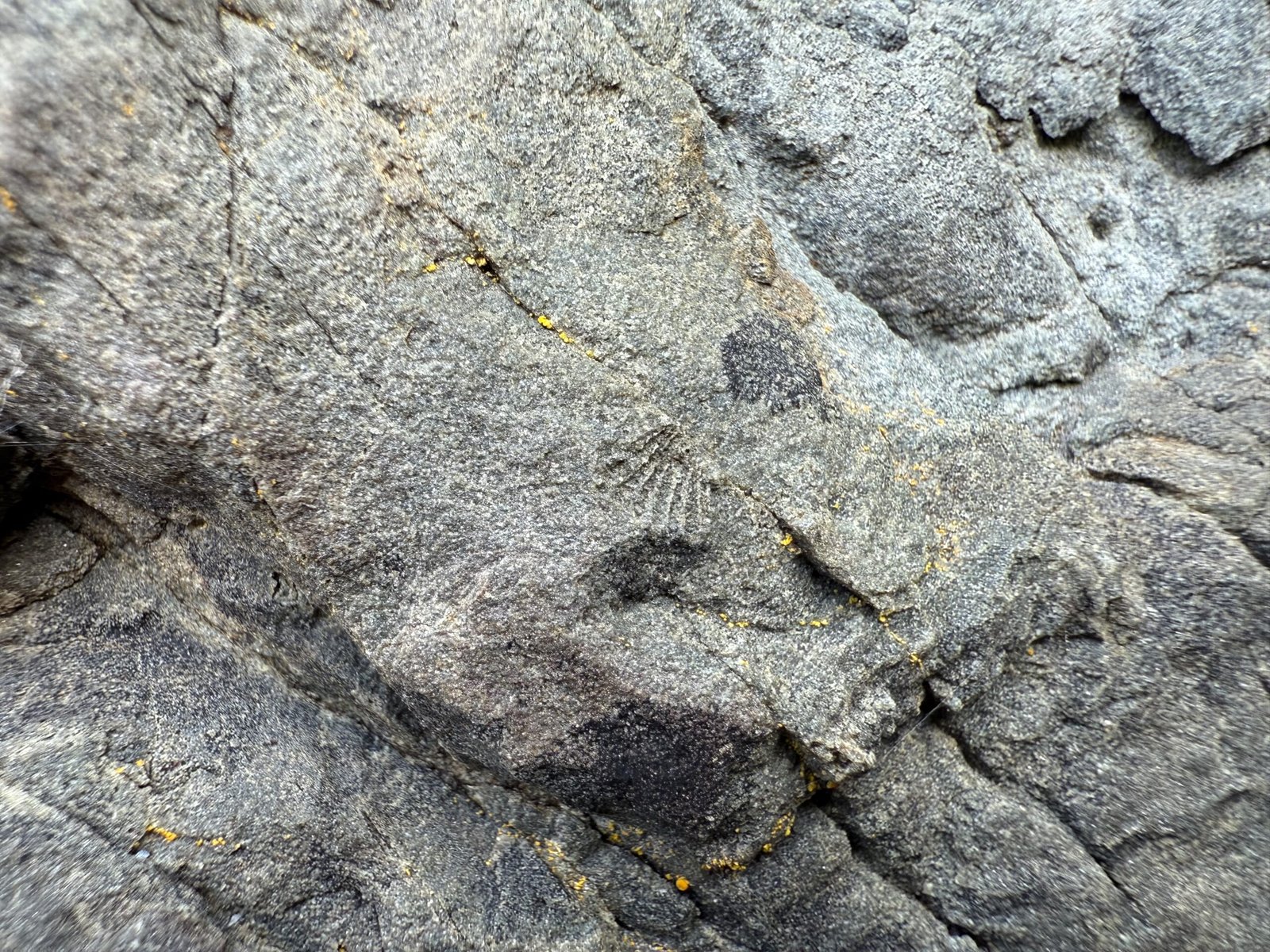
Then, after about half an hour, I struck what felt like the motherlode on the southwest side of the island. In loose, easily split shale-like rock near the high-water mark, I uncovered slab after slab filled with fossilized shells.
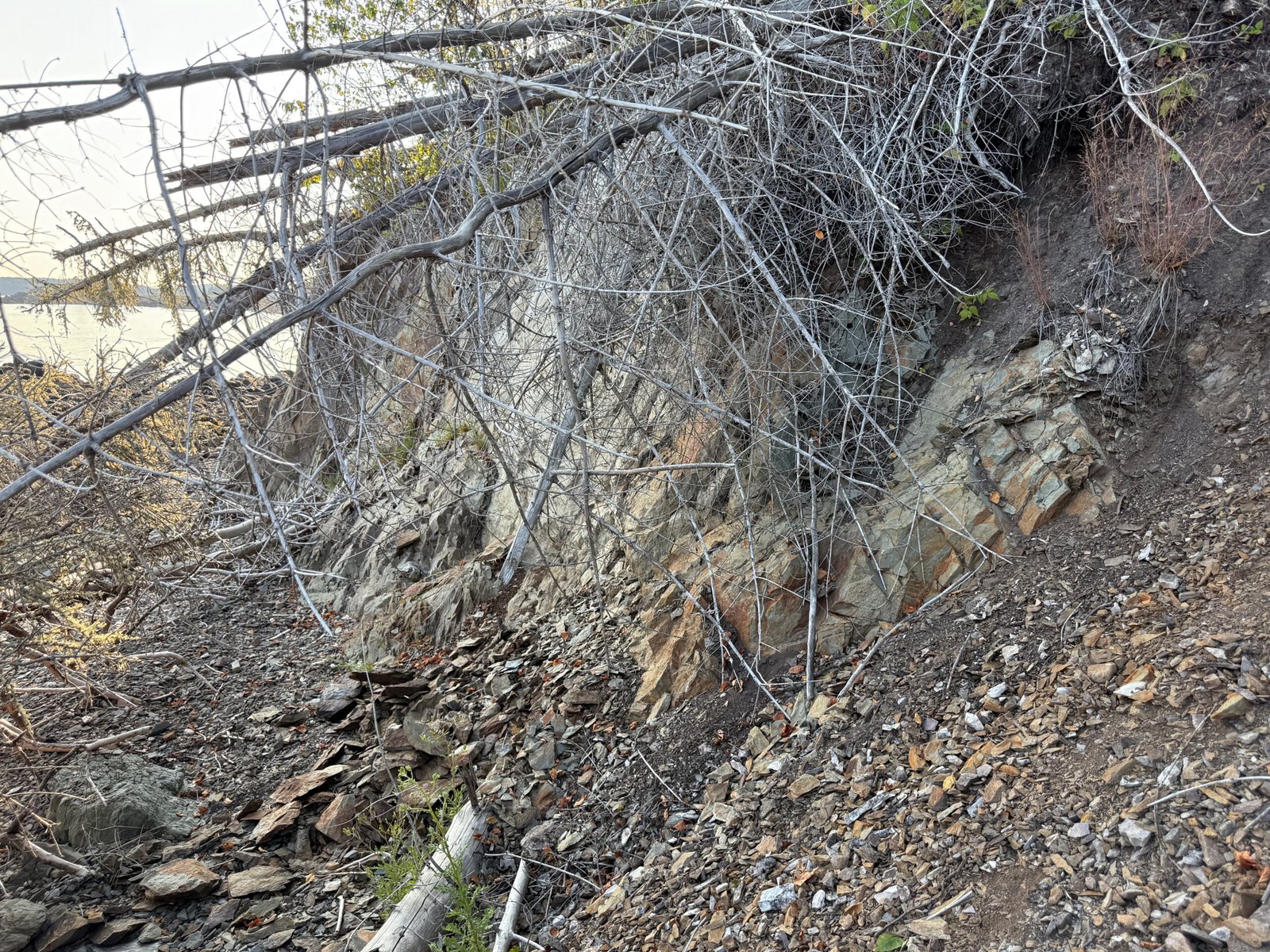
5 What I Found: Brachiopods from a Silurian Sea
The fossils I found were most likely brachiopods – specifically the genus Camarotoechia, and possibly the species Camarotoechia neglecta. These small to medium-sized marine creatures thrived during the Silurian Period, approximately 430–420 million years ago.
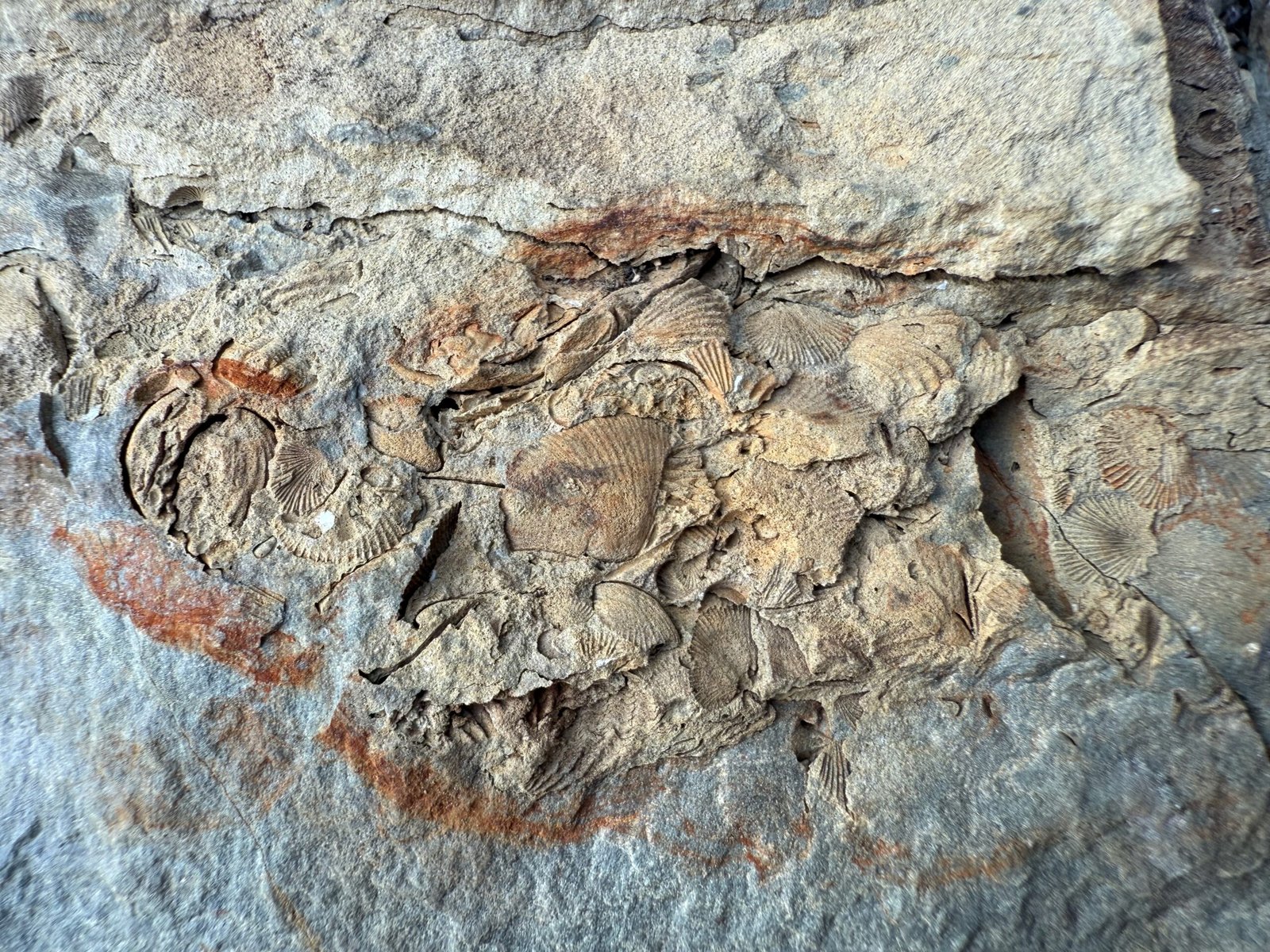
Their shells had strong radial ribs and a triangular outline, features still visible despite hundreds of millions of years of burial and weathering. Back then, New Brunswick sat near the equator, submerged beneath warm, tropical seas teeming with life. These brachiopods would have lived anchored to the seabed, filtering food particles from the water, part of a thriving marine ecosystem.
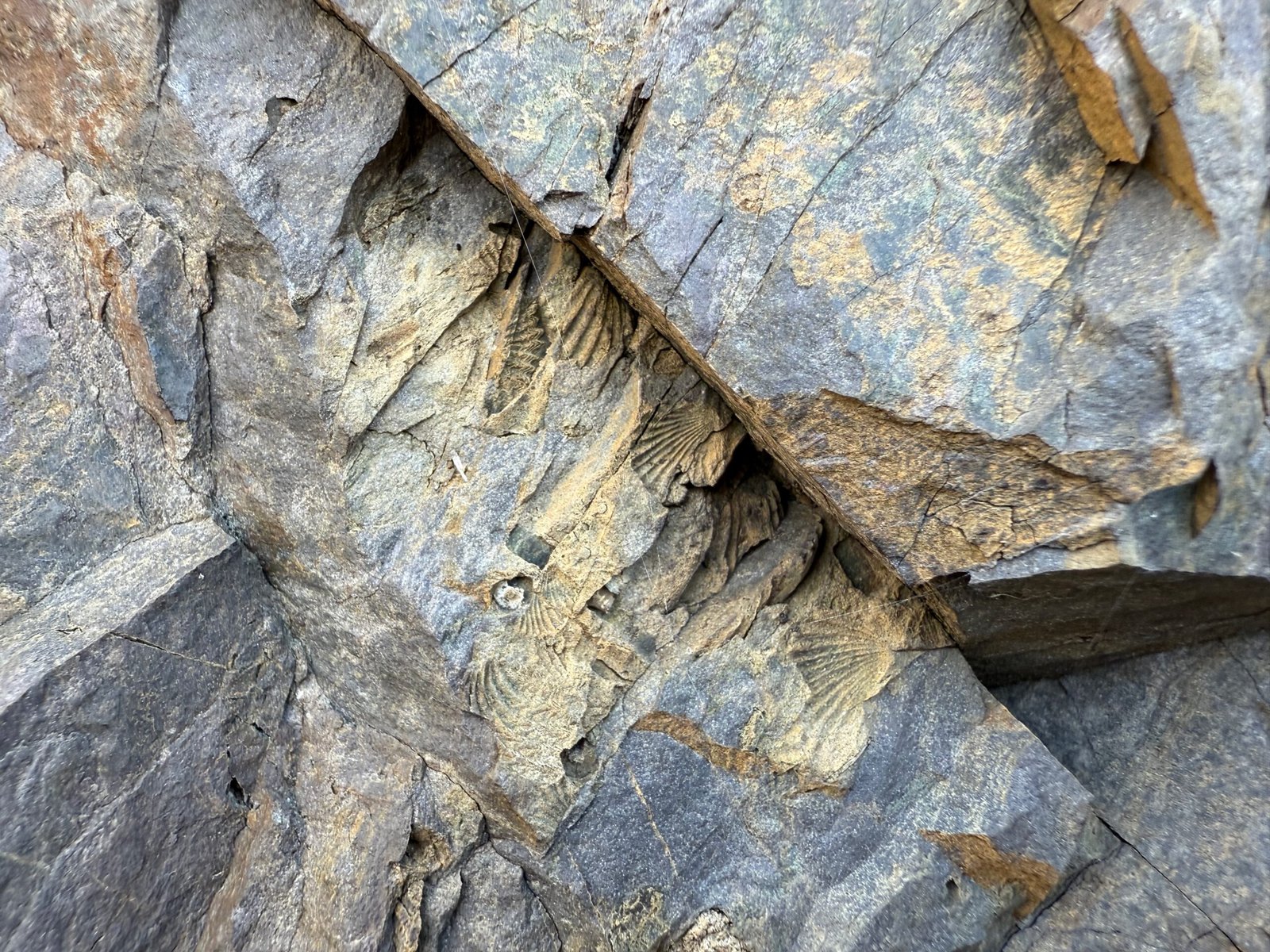
As I studied each fossil, I couldn’t help but imagine these long-extinct creatures alive again – their shells opening and closing on a Silurian sea floor while trilobites scuttled by and coral reefs grew nearby.
6 A Mystery Rock from the Ice Age
Not all of my discoveries matched the ancient bedrock. At one point, I stumbled upon a large block of rock packed with fossilized clam and oyster-like shells, unlike anything else on the island. It didn’t belong here.
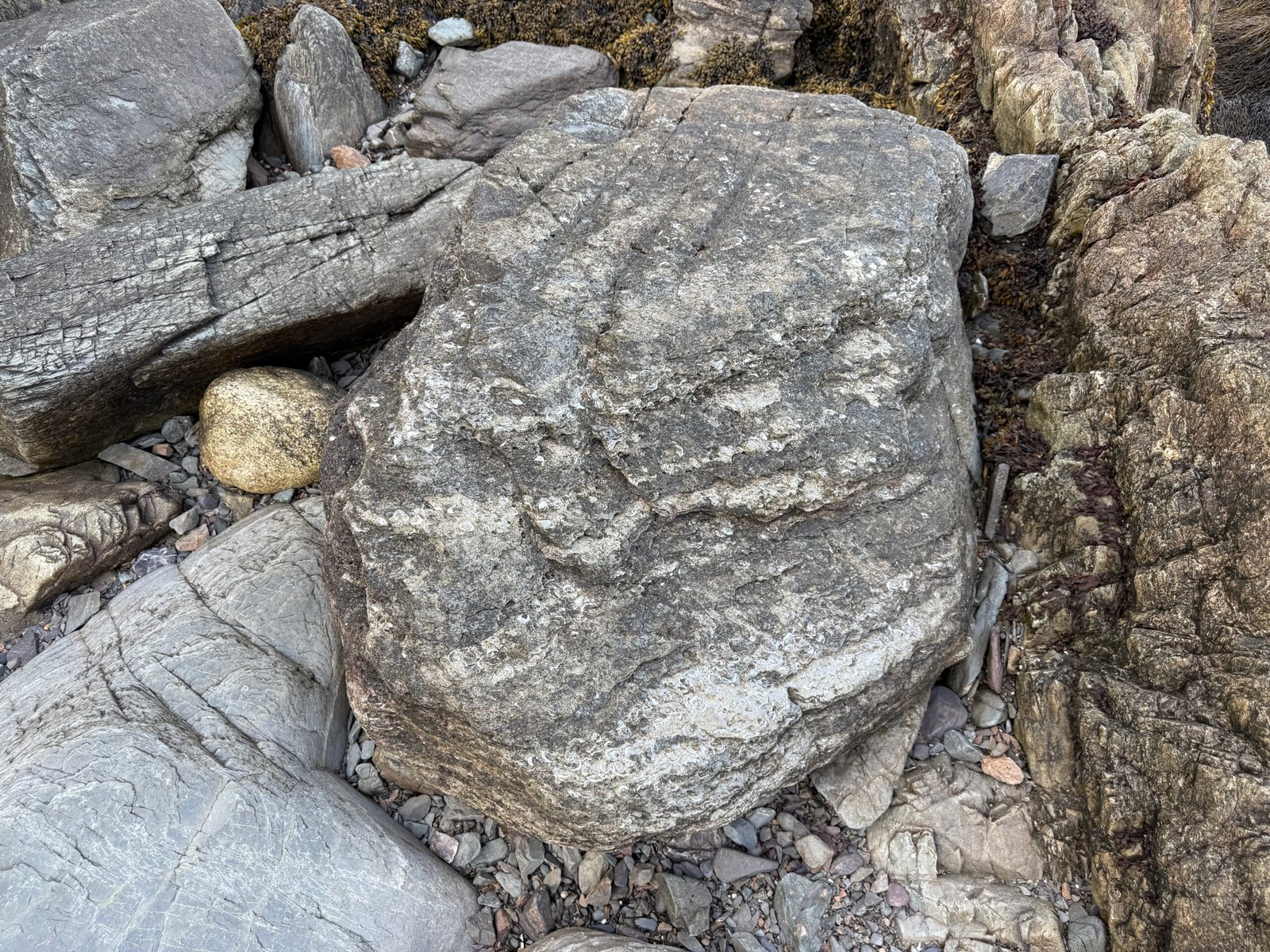
This block was likely coquina or shell-rich limestone, formed much more recently – thousands rather than hundreds of millions of years ago. Most likely, it was carried south by glaciers during the last Ice Age and dropped on Crow Island as the ice retreated. A misplaced relic, linking two very different time periods in Earth’s history.
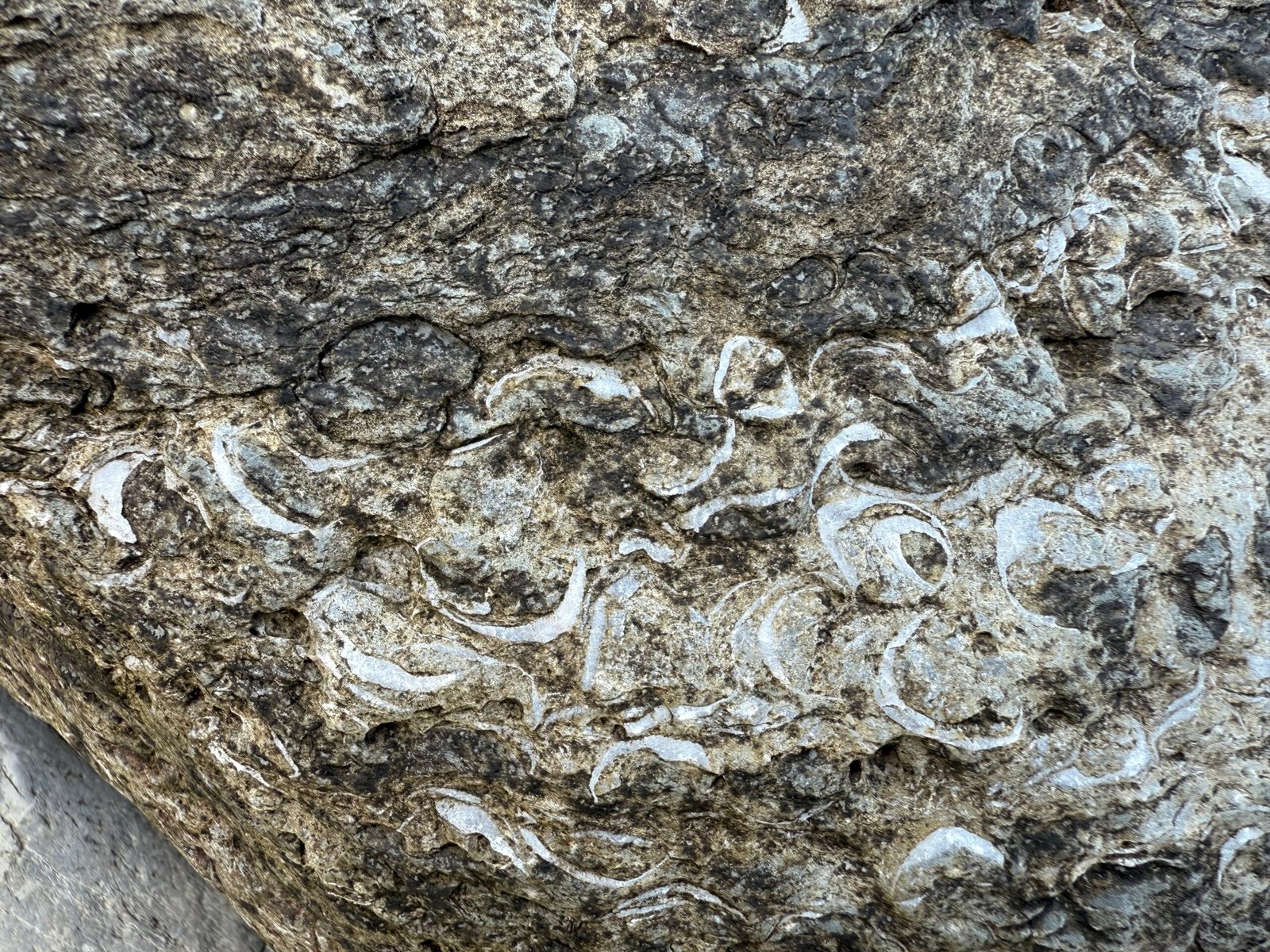
7 Fossil Ethics and Preservation
I should pause here to stress something important: in New Brunswick, it is illegal to collect fossils without a permit. These fossils are part of our shared natural heritage. My approach is always to admire, photograph, and then return them exactly as I found them, usually face down to reduce weathering.
That way, the next curious explorer can feel the same thrill of discovery I did.
If you come across something unusual or scientifically significant, consider reporting your find to the New Brunswick Museum in Saint John. Their paleontology team documents fossil sites across the province, and your observation could contribute to ongoing research.
I also made sure to check land ownership before my trip. According to the provincial land registry, it appeared as though Crow Island is Crown land, so I was free to conduct my amateur exploration without trespassing.
8 The Joy of Discovery
There’s something about fossil hunting that never gets old. Each find is a bridge across deep time – a connection to a vanished world. As I turned over rock slabs on Crow Island, I felt the same joy and wonder I experienced as a teenager.
After about an hour and a half, satisfied with my discoveries, I made the trek back along the sandbar, mindful that the tide was already turning. Getting stranded here would mean a long wait surrounded by cold Fundy waters!
Before leaving the area, I paused by an old sardine weir near the island and watched fishing boats pass by, a reminder of the region’s living heritage alongside its ancient one. Later, I drove to the nearby Greens Point Lighthouse, where I capped off the day with a spectacular sunset – the perfect ending to a science-travel adventure.
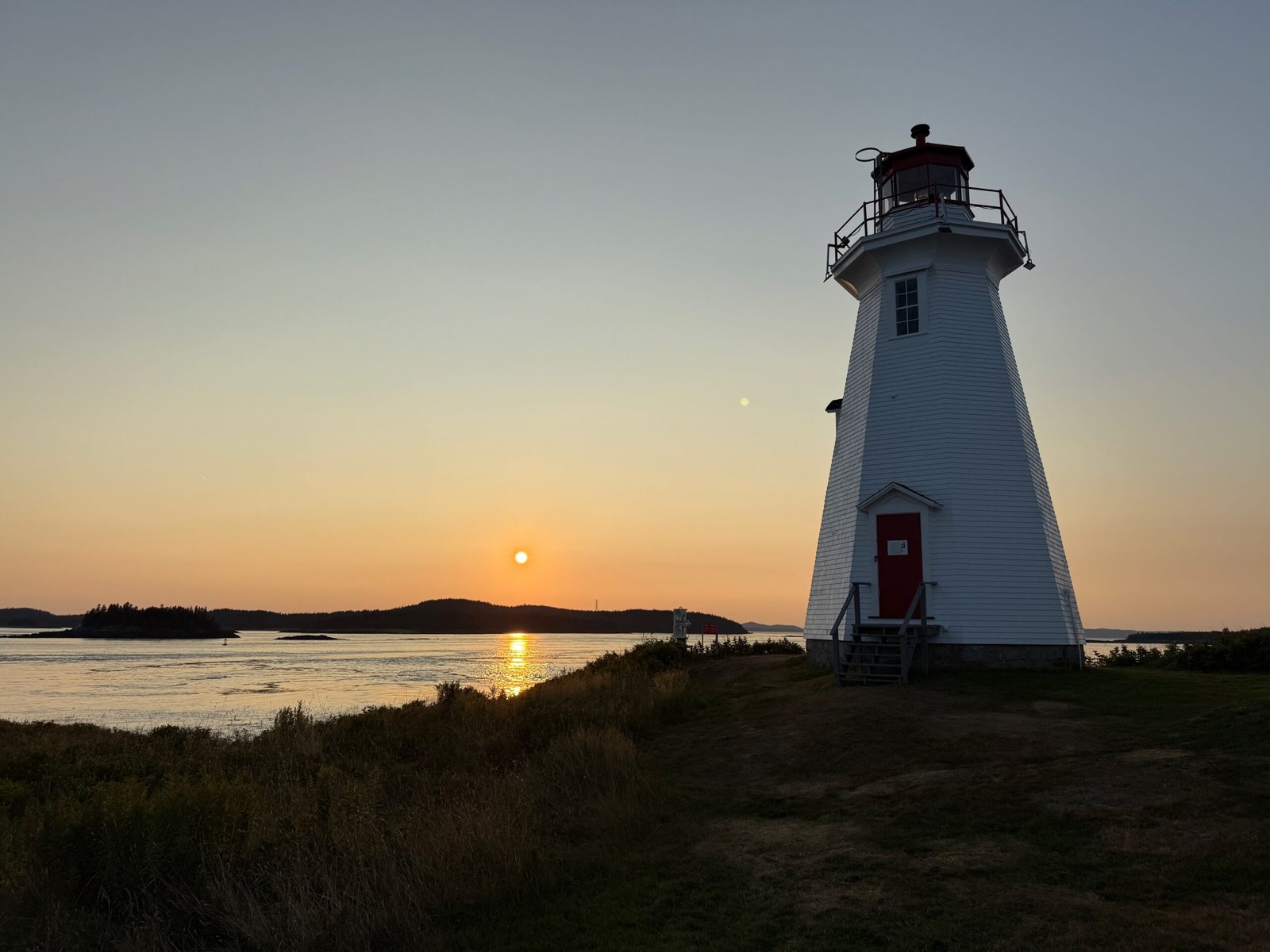
9 Crow Island Fossil Hunting Tips: How to Plan Your Adventure
If you’re inspired to visit, here are a few tips to make your adventure both safe and rewarding:
- Timing is everything: Arrive 2 hours before low tide to allow plenty of time to explore and return safely before the tide covers the sandbar.
- Check tides carefully: The Bay of Fundy has the world’s highest tides, and the sandbar disappears quickly. Getting stranded could mean hours of waiting.
- Footwear matters: The approach over slippery rocks and seaweed is very challenging. Wear sturdy shoes or boots with good grip.
- Bring the right gear: A local fossil field guide can help you identify what you find, and a rock hammer can be handy if you’re experienced (though remember, removing fossils without a permit is prohibited).
- Pack essentials: Water and a snack are wise to carry, especially if you end up waiting for the tide to recede before heading back.
- Dress for the Bay of Fundy: Even on sunny summer days, the wind can be cool and fog can roll in quickly. Bring a light jacket to stay comfortable.
- Capture the moment: Bring a good camera or smartphone to photograph your finds and the scenery – it’s the best way to take fossils home without disturbing them.
- Leave fossils in place: Admire and photograph them, but don’t collect. A provincial permit is required in New Brunswick.
- Enjoy the surroundings: Pair your fossil hunt with a stroll around Back Bay, a stop at Greens Point Lighthouse for sunset, or simply soaking in the rugged Bay of Fundy coast.
10 Final Thoughts
Returning to Crow Island after four decades was more than just a fossil hunt – it was a journey back in time, both geologically and personally. To hold a Silurian brachiopod in my hand and picture it alive in tropical seas 420 million years ago is a reminder of how fleeting our own moment in Earth’s history really is.
For science travellers, Crow Island is a hidden gem – part adventure, part natural history lesson, and wholly unforgettable.

11 More Science Travel Stories
If the adventure of discovering Crow Island fossils sparked your curiosity, here are more science-infused journeys into geology, fossils, and the power of nature:

